došle na internet 3 sedmice dazad. TOLIKA JE TO SRAMOTA BILA ZA LIPU NAŠU. Gospodin na filmu koji me dužio(jedan od njih) masovnog klanja godine Hrvatskih riba godine 2013 bio je u mom slučaju vjerovatno od moje 10 godine mladosti...zbog takvih glupotina i tvrdnji kako parrot fish nikakva je za jelo riba, Hrvati su se osmješili najviše na Jamajki gde smatraju takvu vrstu ribe kao delikatesu ali ipak u mojem slučaju ima pravde i za umske bolesnike pa so se brzo snalazili i u svojoj bolesti još ojaćali svoje tvrdnje sa novim prijateljima kako netreba da mi se pomaže zbog rasne mržnje. Ipak najiše u Hrvatskoj sviđale mi se psihiatrijske bolnice gde su me transportirovali iz Slovenije za extra terror. SUPER !!!
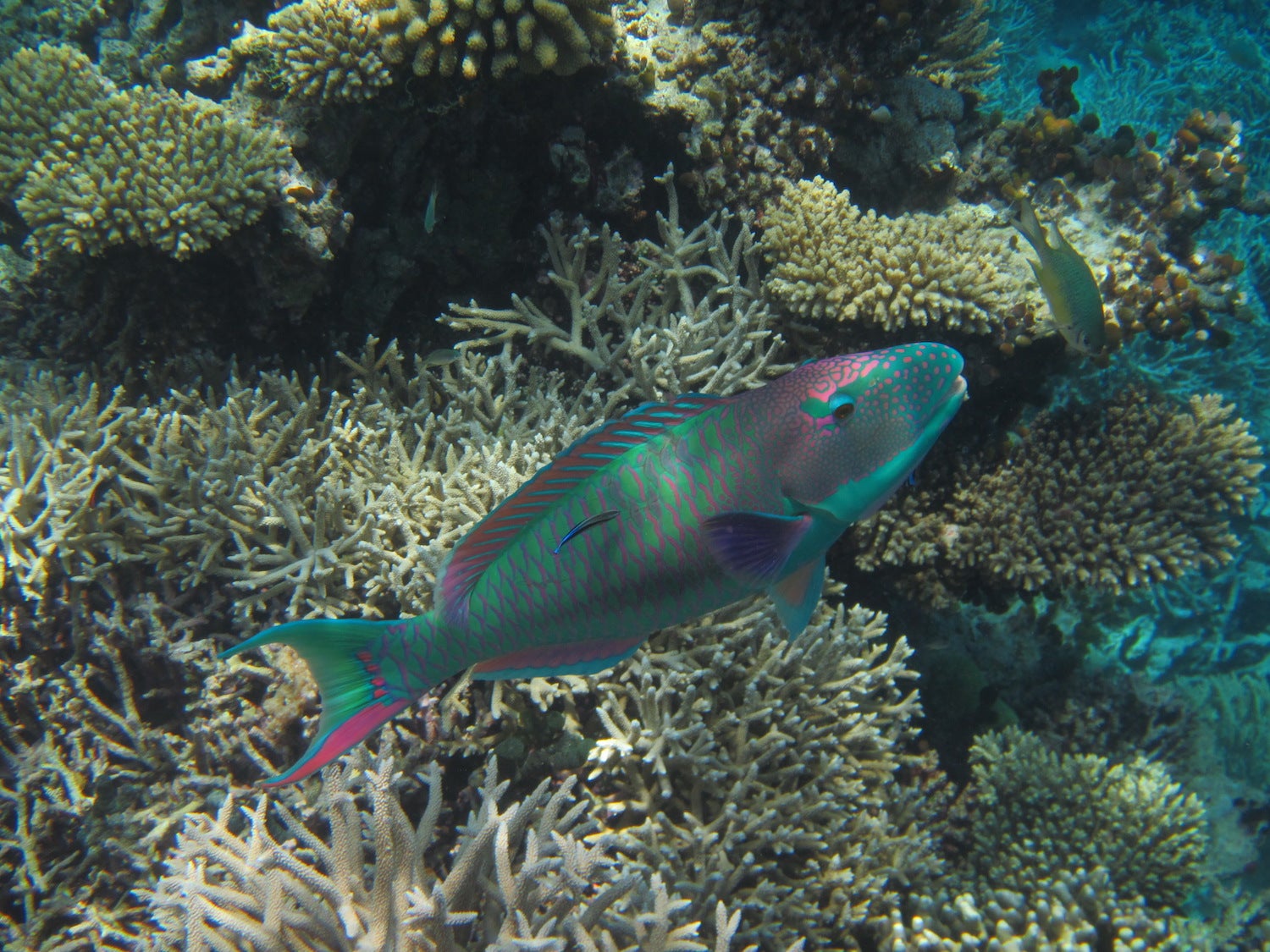
3 Reasons why you should stop eating Parrotfish
Image source: Wikicommons
After living in Jamaica for five years, every time I visit for work, I try to squeeze in whatever time I have to say hello to friends.
On my last visit, I was very fortunate to have meetings on both sides of the weekend allowing me to spend my off days in a familiar place with familiar people. My friends and I decided to take advantage of this rare opportunity and head east to Hellshire, a popular Jamaican hang out spot along the coast, known for its fresh fish and other seafood done to order. To my great surprise, or rather disappointment, my friends all requested “parrotfish”, without remorse.
To many consumers, parrotfish is a saccharine delight, which in Jamaica is usually prepared whole and either fried, steamed or brown stewed. To ichthyologists, parrotfish are colorful and insatiable herbivores that spend around 90% of their day eating algae off of coral reefs. To environmentalists, parrotfish are sand machines, turning the coral they eat into … you guessed it: sand!
What I found was that my friends, who form part of the consumer group described above, did not intend to infuriate environmentalists. They simply did not understand the impact of their “delights” on the environment and the importance of preserving this species. This blog is what I tried to convey in my discussion with them.
Here are 3 reasons why we should immediately stop the consumption of parrotfish.
- The first one was already mentioned. Parrotfish “discharge” up to 100 kg of white sand a year for every year of their lives. Larger parrotfish are like sand factories, producing upwards of a tonne of sand per year. The University of Exeter found that parrotfish produced more than 85% of the new sand-grade sediment on the reefs in the Maldives. When we consider the impact over thousands of years, imagine the amount of beautiful white sand parrotfish can produce if they were allowed to live and not consumed. This is very important in avoiding beach erosion. Worms, sponges, and oysters also produce Pacific Ocean sand, but no animal is as proficient as the parrotfish. This also becomes irrelevant when we consider that Jamaica is not in the Pacific!
- Parrotfish are also essential to the survival of coral as they act as ‘natural cleaners’ of parasites that grow on it. Without the help of the parrotfish, the coral would simply die. According to a 2012 study, the loss of parrotfish disturbs the delicate balance of coral ecosystems and allows algae, on which they feed, to smother the reefs. The study also found that Caribbean corals have declined by more than 50 percent since the 1970s and may disappear in the next 20 years as a direct result of the loss of parrotfish and sea urchins — the area’s two main grazers — and not primarily as a result of climate change, as is widely believed. The study further shows that some of the healthiest Caribbean coral reefs are those in areas where governments “have restricted or banned fishing practices that harm parrotfish, such as fish traps and spearfishing”. These include the Flower Garden Banks National Marine Sanctuary in the northern Gulf of Mexico, Bermuda and Bonaire.
- Last but not least, let us consider the economy. A 2015 study noted that the direct contribution of travel and tourism to GDP in Jamaica was JMD128.3bn (8.1% of total GDP) in 2014, and was forecast to rise by 4.7% in 2015, and to rise by 4.6% pa, from 2015-2025 to JMD211.2bn (11.6% of total GDP) in 2025. Another study describes the importance of coral reefs to the people and economy of Jamaica. It shows what most of us already know: Coral reefs help to build and protect Jamaica’s beautiful white sand beaches, which attract tourists from around the world. Reefs provide critical habitat for Jamaica’s artisanal and industrial fisheries and also protect Jamaica’s coastline — including coastal communities and tourist hotels — from the destructive force of tropical storms. In other words, eating parrotfish has a direct impact on the economy. Tourists travel to Jamaica for much more than reggae music and delirious, irie ‘rastas’; the diaspora takes care of that! They travel for the sand and the sea. Tourism depends on the beaches, and the beaches depend on the coral, all made possible by this voracious species. By consuming parrotfish we rob the beaches of their sand, and in turn, harm the economy.
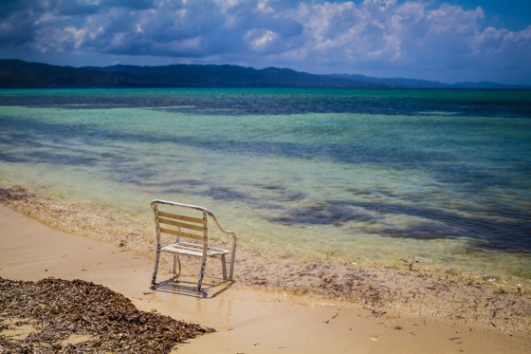
Source: Ramon Zamora
Caribbean reefs generate more than US$3 billion annually from tourism and fisheries. For years, there have been discussions on taking strong action for ocean conservation, not just for saving parrotfish, but also for establishing marine reserves. While it has been proven that restrictions and other bans on parrotfish capture have helped protect the environment, we cannot just patiently wait for the laws to change. When our habitat is affected, we are affected, and when the economy faces challenges, the effects will certainly be upon us and future generations. Just like my friends – after a better understanding of the issue – vowed never to have parrotfish again, I hope that you too decide to forego parrotfish in the future. Red snapper, maybe?
Source: Rachel Boyce
The Agrimonitor initiative has also decided to do its part and expand its scope to include the monitoring of policies that regulate and support the fisheries sector. The first worldwide application of the Producer Support Estimate methodology to fisheries is about to be implemented and the first country to be analyzed could not come from anywhere else than the Caribbean. Stay tuned for news from The Bahamas in the upcoming months!
Invasive Species Threaten the Biodiversity of the Adriatic Sea
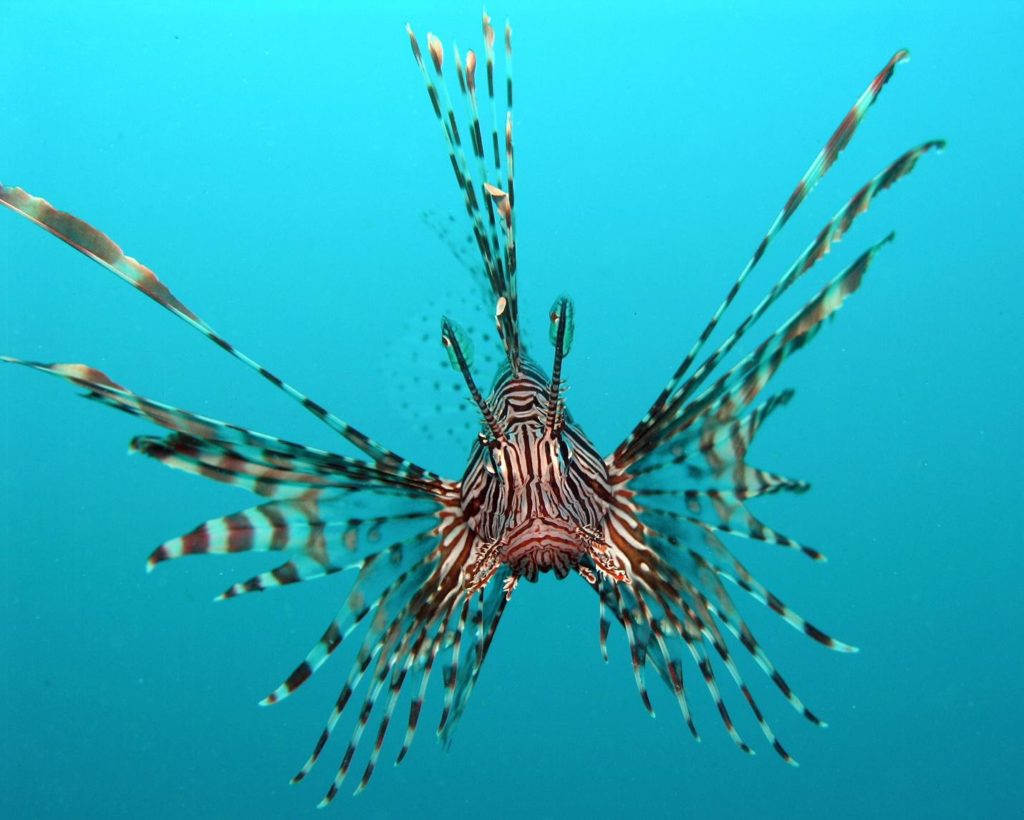
The arrival of nearly 50 invasive species into the Adriatic Sea over the course of the previous three decades confirms new conditions developing in this Mediterranean sub-basin, but also represents a danger to its biodiversity. Fortunately, there are still ways in which such a threat could be minimised.
—
All organisms living in an ecosystem rely heavily on each other, and because of that, every species, no matter how small, has an important role to play. Removing, or even simply endangering, any part of this complex web of life has a potential to disrupt the functioning of entire ecosystems. In contrast, increased biodiversity ensures nature’s stability, as well as its sustainability. For all these reasons, the late Edward O. Wilson (also known as ‘the father of biodiversity’) believed that “preserving biodiversity is an ethical imperative.” This idea is particularly relevant nowadays when, perhaps more than ever before, the future of biodiversity in many ecosystems is uncertain: one of them being the Adriatic Sea.

Being the northernmost part of the Mediterranean Sea, the Adriatic Sea occupies an area between the two Peninsulas – the Italian and the Balkan – and splashes the coasts of six countries, among which the smallest one is Montenegro. As its name indicates (‘Black Mountain’), this country is predominantly highland: 89.3% of Montenegro is at elevations that, indeed, place it in top ten countries in the world with the highest percentage of mountain area. Nevertheless, despite its geographical structure, Montenegro is a very sea-oriented country – tourism represents one of its main economic branches and its coast is the region with the highest population density. Similarly, in terms of science, Montenegro has its own Institute of Marine Biology in Kotor (IMBK) dedicated to the study and protection of the Adriatic Sea. Through such work, IMBK does not only contribute to the local understanding of the Southern Adriatic, to which Montenegrin waters belong, rather, it also plays an important role in the scientific knowledge of the entire Adriatic Sea. This was recently illustrated in a report in which IMBK, alongside its regional partners (i.e. Institute of Oceanography and Fisheries in Split, Croatia), confirmed 46 new species that had settled in this part of the Mediterranean Sea since the mid-1990s. The same findings were also published in a book titled Ihtiofauna Jadranskog mora (transl. Ichthyofauna of the Adriatic Sea) written by the Croatian scientists Jakov Dulcic and Marcelo Kovacic.
The Adriatic Sea is considered “one of the richest seas in terms of species, while it is one of the poorest in terms of population density.” The low-volume aspect is particularly apparent in the waters off the Montenegrin coast where the greatest depths reach around 1,400m, making it the deepest area of the Sea. Nonetheless, approximately 70% of known fish species in the whole Mediterranean Sea is recorded in the Adriatic. Thus, it might seem that the migration of new species to this part of the world ocean is a positive phenomenon from a standpoint of even greater diversity and, especially, increased volume.
What is an Invasive Species?
However, when it comes to nature, things are not always that simple and straightforward. Specifically in this case, a set of chain reactions occurs with the appearance of alien (‘allochthonous’) species in a new ecosystem, because most of them are considered invasive. As indicated, such species (when away from their natural habitats) are prone to invasion of new places. Simply, on one hand – when they migrate and successfully adapt to a different ecosystem, the invasive species are hunting the native (‘autochthonous’) ones, rapidly lowering their population. On the other hand – since they previously have not been a part of an ecosystem, the alien species lack their natural predators in the new home, which allows an uncontrolled population growth. Consequently, such reactions lead to disturbances of stable ecosystems, causing problems to biodiversity of the sea world and its food chain, as well as to the species outside the water, including humans, who rely on sea as a food source.
Examples of Invasive Species
Good examples of the above-described outcome were recorded in different parts of the world. Namely, in the Turkish part of the Mediterranean Sea, a survey has shown that “98% of the entire herbivore fish biomass was composed of alien rabbitfish” (Siganus rivulatus and S. luridus) which are widely infamous for their successful invasion method. The rabbitfish, once established, grazes down the native algae forests at a rate that does not give it enough time to regrow. This opportunity is then seized by invasive tropical algae which form their own ‘turfs’ or ‘barrens.’ Subsequently, such a scenario leads to a large loss of biodiversity – another research recently found that “biomass was 44 times lower in turfs than in algal forests.” In addition to the vegetation destruction, an established population of rabbitfish also causes “a 40% reduction in the overall number of species present.”
Another allochthonous species, notorious for its invasion technique, is the lionfish (Pterois miles and P. volitans). This species, with a rather interesting name, feeds on small autochthonous fish and crustaceans in very large quantities since its stomach can expand as much as 30 times. And what is perhaps even more troublesome is that “95% of lionfish prey is comprised of ecologically and economically significant native fish.” An example from the Bahamas precisely depicted how harmful the diet of lionfish can be for the sea world: a 40% increase in the number of this invasive species was associated with a 65% reduction of fish they are preying on. Given these facts, it should come as no surprise the worry that the Montenegrin scientists have felt once the presence of the lionfish was recorded in the southern and northern parts of the Adriatic Sea.
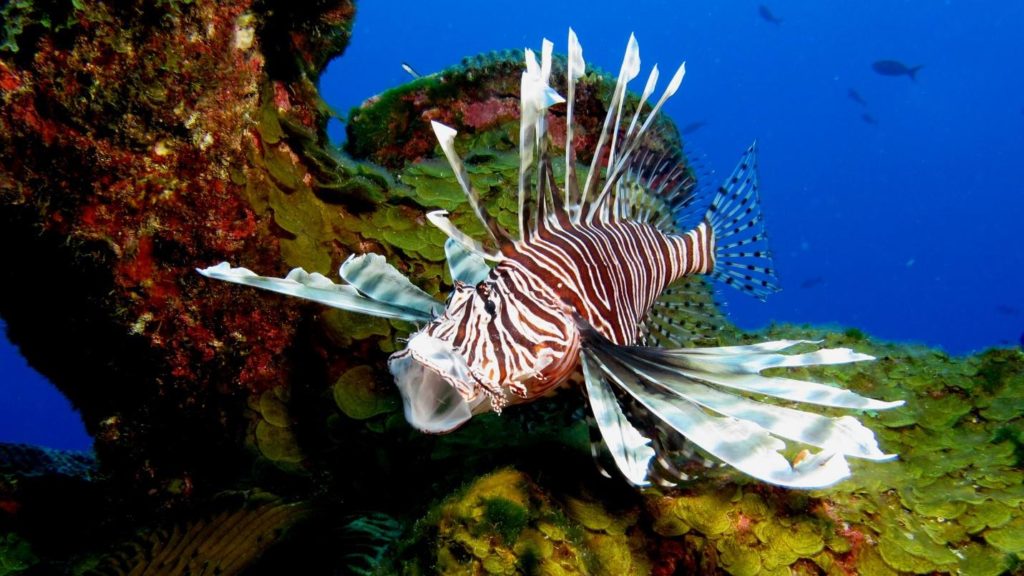
As confirmed by an ichthyologist and the director of IMBK Aleksandar Joksimovic, PhD – there are no natural predators of the lionfish in the waters of the Adriatic Sea. Therefore, this species can reproduce at a very high rate because its mature females lay 50 thousand eggs every three days. This information not only increases the concern for the native fish species in the Adriatic, but also requires a warning for people that visit or live on the Montenegrin coast. Namely, the lionfish has over a dozen spines whose endings have cells filled with neurotoxins that can be fatal for people with a weak immune system.
Another newcomer in the Adriatic waters, the silver-cheeked toadfish (Lagocephalus sceleratus), presents a threat in similar ways. Regarding the sea biodiversity, this species has a negative effect since it reproduces very fast and feeds on benthic invertebrates. Its very strong fused teeth allow the silver-cheeked toadfish to also cut through the fishing nets and steal the catch. However, such economic loss for the fishermen is not the greatest danger that this species create for humans: the silver-cheeked toadfish contains tetrodotoxin (in its ovaries, skin, muscles, and liver), which is a neurotoxin 1,250 times stronger than cyanide. And although this fish, once properly prepared, is considered a delicacy in Japan (known as ‘fugu’), its consumption can cause severe health problems, including death.
Therefore, in addition to disrupting the ecosystem balance and its biodiversity, invasive species have a potential to endanger humans. Taking into account all those negative effects, it is important to present the ways in which allochthonous species, such as the lionfish and the silver-cheeked toadfish, have arrived to the Adriatic Sea.
You might also like: Invasive Species: How Concerned Should We Be?
How Do Invasive Species Enter the Adriatic Sea?
Despite the fact that Montenegro generates a relatively small share (0.007%) of the global emission of greenhouse gases, the country still feels the impacts of climate change. That is perhaps best depicted in the temperature rise of the Adriatic Sea. During the previous three decades, the Adriatic has been getting warmer by 0.03C every year. Such an increase has been concurrent with the trend of the whole Mediterranean Sea, which, in fact, is developing into the fastest-warming sea as its temperatures are rising 20% faster than the global average. Consequently, the so-called ‘tropicalisation’ process has been happening in various parts of the Mediterranean, including the Adriatic Sea. In other words, the Sea is becoming tropical and, as the scientists from IMBK confirmed, the appearance of the invasive species is a clear bioindicator of that. For example, the lionfish and the silver-cheeked toadfish are considered ‘thermophilic species,’ because their natural habitats are warm and tropical seas (e.g. the Red Sea). Hence, their ability to survive in the Adriatic points to the fact that the new temperature of this sea suits these fish, which most arguably was not the case in the past.
There are two primary ways in which the allochthonous species have been arriving to the Adriatic Sea. Firstly, there is a voluntary migration of these species through the passages located between the Mediterranean Sea and other parts of the world ocean. Most notably, this pertains to the human-made Suez Canal that was built in 1869 to connect the Red Sea (and the Indian Ocean) and the Mediterranean Sea. It is interesting that the species, which travel into the Mediterranean through the Suez Canal, are also called ‘Lessepsian migrants,’ after the developer of the passage – Ferdinand de Lesseps.
Secondly, there is also an involuntary migration of alien species into the Adriatic Sea. This type of movement is done by the naval transport, including the cruise ships which are very popular throughout the whole Mediterranean: 16.8% of the total cruise journeys worldwide are done in this region (only the Caribbean has more visits). Namely, large vessels use so-called ballast waters to ensure stability during journeys. These waters are pumped into the ship’s hull in one port and then released/replaced at some of the following stops. The issue with this process is that one cubic metre of ballast water can contain up to ten thousand sea organisms (e.g. undeveloped larvae, young and mature species of various kinds). And for that very reason, the International Marine Organization (IMO) recognized ballast waters as “one of the most significant global ecological and economic risks.”
But, since the allochthonous species are literally brought into novel ecosystems by the cruise ships, some of those ‘passengers’ – perhaps the non-invasive ones – do not adapt to the new surroundings and die out. Nevertheless, the 2014 study “Cruise tourism environmental impacts – The perspective from the Adriatic Sea” shows the other possibility. This research argues that the majority of invasive species in the Croatian part of the Adriatic arrived there precisely via the ballast waters. And not only that Croatia and Montenegro are close, almost next-door, Adriatic neighbours, but they are also among the top 20 cruising destinations in the whole Mediterranean. Moreover, within the Adriatic region these two countries are ranked even higher: in 2019 the top three cruising destinations of this Sea were Venice (Italy), Dubrovnik (Croatia) and the Montenegrin representative – the city of Kotor.
Located in the Boka Kotorska Bay, this city was founded in 168BC during the Ancient Roman times, but later also conquered by the Illyrians, Venetians, Austrians, and French. The remains of such rich history are still seen nowadays through the city’s architecture; hence, it should be no surprise that the Natural and Culturo-Historical Region of Kotor has been a part of UNESCO World Heritage Sites since 1979. Thus, Kotor has been a very popular tourist location. A good representation of it is cruise tourism, which (prior to the COVID-19 pandemic) has been on a steady rise in this city: between 2008 and 2018 there was a tenfold increase in the number of cruise tourists. In terms of economy, until 2020 cruise ship activity was the fastest-growing segment of Montenegrin tourism (e.g. in 2019, approximately a 50 million euros profit was derived from the cruise ships). And whereas in the rest of the world this type of activity does not exceed 2% of the total tourism industry, in Montenegro that share has risen significantly between 2007 (4%) and 2016 (29%). The numbers were to continue rising in 2020 – the forecast had predicted record-breaking 560 cruise entrances in the Boka Kotorska Bay, yet only nine of them were realised prior to the COVID outbreak, which caused a year-long halt.

Even though the negative environmental effect of cruise ships is multi-dimensional, it is important to mention a specific example from the Northern Adriatic in order to understand the impact of these vessels on the migration of invasive species. Namely, in 2020 Croatian scientists recorded a large quantity of the sea walnut (Mnemiopsis leidyi), which is an allochthonous species originating from the north-eastern coast of the United States and the Gulf of Mexico. According to the scientists, this invasive species most likely arrived in the Adriatic via the ballast waters of the cruise ships. The sea walnut is particularly dangerous to fisheries, because it can create a significant damage to the stock of small blue fish such as sardines and anchovies. In the past, similar kinds of harm occurred in the Black Sea (during 1980s), the Sea of Azov and the Caspian Sea (in the 1990s) where the sea walnut appeared, established its population, and ultimately led to a disturbance of the ecological balance.
What Can Be Done?
One of the first invasive species that was recorded in the Montenegrin part of Adriatic Sea was the algae Caulepra cylindracea back in 2004. Thanks to its negative impacts on the sea biodiversity, this type of green algae has an ill-famed nickname ‘tumour of the Mediterranean.’ Specifically, Caulepra cylindracea releases alkaloid substances that cause death of various sea organisms. At the same time, the algae has no natural predators, so it spreads at a very high rate creating ‘underwater deserts’ of uniform landscape and low biodiversity. The most notable species endangered in Caulepra cylindracea’s invasion is Posidonia oceanica, an extremely important seagrass that oxygenates the sea ecosystem, stores very large quantities of carbon dioxide, and helps prevent coastal erosion. Aside from the Posidonia, the invasive Caulepra cylindracea also threatens the survival of fish, crustaceans and mollusc which feed on underwater plants and use bare rock/sand as their habitat.
Following the 2004 discovery of this allochthonous species near the city of Budva, the scientists from the Montenegrin Institute of Marine Biology received a multi-year funding for the monitoring programme. Ever since the government support stopped, the monitoring has not been up to date, hence the clear information about the presence of Caulepra cylindracea is not available. Recently, everything that the IMBK scientists have been able to note (during their field work) is that this invasive species has spread and is now present at more locations – toward the city of Bar and at the entrance of Boka Kotorska Bay. Therefore, this time around the government of Montenegro should not make the same mistake and, instead, provide a continuous funding for tracking programmes of the dangerous newcomers to its Adriatic waters.
Another action that should be put in place simultaneously with the monitoring system is fishermen education about the invasive species. Given that these people spend a lot of time on the sea, their familiarity with the allochthonous fish could be an additional source of information regarding changes in the Adriatic. In the case of IMBK, such educational programmes would not be a complete novelty, since this institution has a long-lasting cooperation with fishermen. Namely, many of the Montenegrin fishers are active participants in the IMBK’s work, as they have a tendency of informing and consulting the scientists whenever they encounter new, unknown species in their catch. It is important to mention that IMBK has already put in place a project of this kind – LEK (Local Ecological Knowledge) – during which the scientists conduct interviews with the fisherman along country’s coast in order to gather information regarding frequency of the alien species in fishing nets, but also about any other current trends in the sea. Therefore, the only recommendation is that similar projects continue to raise awareness about the dangerous newcomers in the Adriatic Sea.
The two actions described above are, as a matter of fact, pre-requisites for a method that has shown best results in combating the invasive species: targeted fishing. The tracking programmes would provide accurate data to the scientists, who would, in turn, use such information (i.e. numbers and location of alien species) to engage the well-educated fishermen in organised fishing. An example of how this strategy could prevent further destruction of the ecosystem is the Western Atlantic, where a developed population of lionfish was decreased significantly through the policies of targeted removals done by fishermen and divers. Most importantly, there are no indications that similar outcomes cannot be achieved with the allochthonous species in the Adriatic Sea, as long as there is a unified will of the government and science to execute the proactive strategies.

Implementing such specific actions is crucial because of a near-certain possibility that the number of invasive species in the Adriatic Sea will continue to rise. There are three main reasons for this hypothesis. Firstly, some prediction models show that the temperature of the Adriatic Sea will increase by an additional 3C by year 2100, which would make this sea even more tropical and, hence, more suitable for migration of other thermophilic species. Secondly, it is to be expected that following the recent expansion of the Suez Canal more species will travel into the Mediterranean Sea. And thirdly, after the recovering 2021 (61 arrivals), the latest predictions are that 250 cruise ships will arrive at Kotor this year. In other words, it appears that cruise tourism in Montenegro is to go back to its pre-COVID trend of several hundred arrivals, many thousands of tourists, and countless sea organisms transported in the ballast waters.
Although the first two reasons are difficult to alter on the national level, there is an opportunity to influence the third one. Namely, Montenegro should create a policy that would limit the number of cruise ships entering the Boka Kotorska Bay. Despite the fact that the country has a great economic benefit from this area of tourism, such a policy would decrease many negative effects the cruise ships impose on the environment, including the amount of ballast waters that are potentially being dumped into the Bay. This is especially important considering the natural uniqueness of the Boka Kotorska Bay (i.e. numerous endangered and endemic species present). Even though it is not certain how often cruise ships release these waters in the port of Kotor, the number of cruise arrivals to Montenegro also reflects the frequency of such vessels in the Adriatic Sea, which is a semi-closed basin with slow sea currents and long retention of water masses. Therefore, dumping of ballast waters in any part of the Adriatic represents an increased threat of new invasive species throughout its entirety.
These recommended policies should be taken into serious consideration because, as it was described, the invasive species can cause significant damage to sea ecosystems. After migrating into new places, these allochthonous species endanger the autochthonous ones by over consuming them and by invading their habitats, all while being able to increase their own population since they do not face natural predators in the new homes. Such a scenario could easily lead to biodiversity loss, as we have already seen it be the case in some other parts of the world. Nonetheless, there were also examples of successful methods against the invasive species, and the hope is that Montenegro will be able to accomplish the same in the Adriatic Sea.






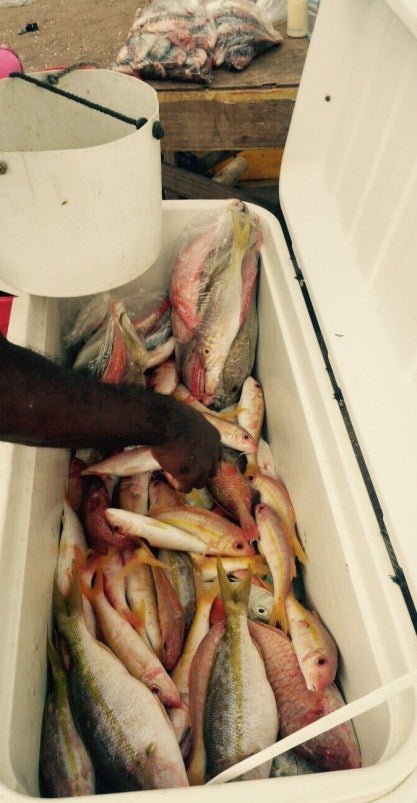
No comments:
Post a Comment